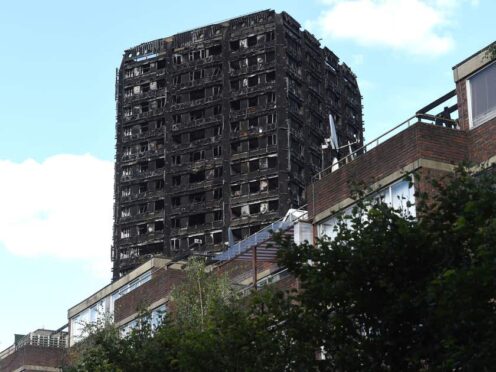
Only two of the 105 buildings included in the Scottish Government’s cladding remediation programme have had work carried out, a report has found.
With a Holyrood committee scrutinising new legislation aimed at dealing with potentially flammable cladding on blocks of flats, MSPs said that “progress has been slow”.
A report published by the Local Government, Housing and Planning Committee said: “Of the 105 buildings within the Scottish Government’s cladding remediation programme, only one has yet had any remediation works carried out, and only one has had mitigation works.”
In contrast it said that as of December 2023 in England more than two fifths of buildings (42%) had had work either started or completed, with 1,608 buildings included in this total.

Remediation works have been completed in 797 buildings (21%) in England, the report added.
It went on to say that of the £97m so far provided by the UK Government to the Scottish Government for cladding remediation “less than £5m has been spent”.
The committee noted the Scottish Government had stressed that spending was “not the only indicator of progress on remediation”.
But those who gave evidence to MSPs as they examined the Housing (Cladding Remediation) (Scotland) Bill “highlighted their frustration with what they see as the slow rate of progress in Scotland”.
In its report the committee recognised “that progress has been slow in addressing the delays in the remediation programme”.
It called on the Scottish Government and other organisations to “make speedier progress in order to give residents in the private and social rented sectors the assurances and actions that they seek”.
It comes in the wake of the Scottish Government introducing a cladding remediation programme after the Grenfell Tower fire in London in 2017, which killed 72 people, with cladding on the high rise block said to have contributed to the spread of the blaze.
The Bill aims to make the delivery of this remediation scheme easier, and also includes plans for a “cladding assurance register” to be developed, which would hold details of surveys of cladding materials and any remediation that has been done to them.
While the MSPs backed the general principles of the legislation, they said there were “concerns that there are a number of areas of the Bill where greater clarity and further consideration would be welcomed”.

Almost seven years on from the Grenfell Tower blaze, and almost three years since the Scottish Government began its building assessment process, the MSPs said that “clear timescales for remediation” were needed “that give assurances to both owners and residents and the wider industry”.
The report welcomed the legislation as a “step toward accelerating the remediation programme” and said it was “recognition of the importance that the Scottish Government is attributing to the programme”.
But the MSPs said that for the Bill to bring about “meaningful improvement in the pace of the remediation programme” changes needed to be made.
The report called for “greater clarity about the purpose of the Bill”, and also said the Scottish Government must set out how it intends to address wider building safety issues.
Committee convener Ariane Burgess said while the proposed legislation was a “positive step in the right direction”, the evidence MSPs had heard made clear that “there is still more clarity needed to guarantee that the remedial action needed will be completed”.
Adding that progress on this “has been concerningly slow” she said: “People have been deeply affected by these issues, and there must also be an improvement in the communication to those living in affected buildings.
“This includes clearer timescales for the work to take place and more detail of the remedial action being done.”
A Scottish Government spokesman said that the cladding remediation programme “is committed to acting to protect lives by focusing on identifying, assessing and ensuring remediation of buildings with potentially unsafe cladding”.
Noting the Bill had been brought in “with a view to addressing barriers to building assessment and remediation”, the spokesman added that First Minister Humza Yousaf had “committed to ensuring that all buildings within the pilot phase of the programme are on a single building assessment pathway by summer 2024”.
The spokesman said: “We are working to finalise the specification for that assessment.”
Saying that “pace of spending on the programme is increasing” the spokesman added: “The Scottish Government will look closely at the recommendations and comments from the committee.”

Enjoy the convenience of having The Sunday Post delivered as a digital ePaper straight to your smartphone, tablet or computer.
Subscribe for only £5.49 a month and enjoy all the benefits of the printed paper as a digital replica.
Subscribe